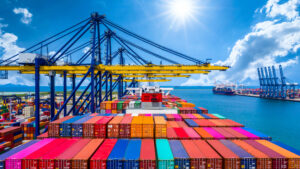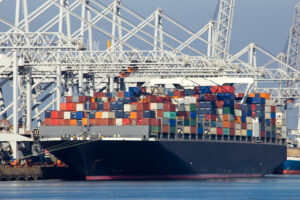Global demand for LNG has never been higher. Although orders might never again reach the number registered in 2022, the market is now in a consistent, healthy phase. Some 133 vessels were ordered in 2023 and over 60 orders have been placed so far in 2024, according to Martin Cartwright, Global Business Director for Gas Carriers & FSRUs at classification society DNV.
This is largely driven by the economics of liquefaction development. Most of the recent major production and liquefaction projects secured long-term offtake agreements before reaching final investment decision, resulting in much more certainty around how many vessels are required for transport.
The vast majority of newbuilds in 2023 and 2024 will be for vessels transporting LNG from the Qatar North Field project to China, its main customer, DNV expert Cartwright says. Europe’s continued close ties with the United States means that replacements for lost Russian gas will continue to be largely sourced from this market, and much of the newbuild activity ahead will be linked to the completion of projects like Golden Pass and Calcasieu Pass 2.
Cartwright offered a comprehensive overview of the current LNG market trends, anticipated supply and demand, and the resulting impact on the LNG carrier order book.
As he said, sharp increases in LNG production and liquefaction capacity have taken place in key regions like the United States and Qatar in recent years, making the market well supplied. Even more is expected to come online over the coming three to four years, with global LNG supply expected to increase by around 35% by 2027.
Gas is widely seen as a bridging fuel for the energy transition, and this has led to skyrocketing demand for LNG, which enables the transport of gas to areas not reachable by pipeline.
LNG demand is also on the rise in Europe, mostly due to the ongoing Ukraine conflict. After the sharp demand peak in 2022, the realignment of European supply is largely complete. European gas storage volumes are now stable ahead of the winter period, leading to much more settled markets in 2024.
In the question if energy efficiency is having an impact on charter rates, the DNV expert says LNG vessels are split between three propulsion types: older steam vessels, dual-fuel/tri-fuel diesel electric vessels and modern two-stroke vessels. The day rates that these vessels can command vary, largely due to cargo capacity but also due to their efficiency.
The question now is whether we will see a fourth generation added to the LNG carrier fleet in the near term, with propulsion changes and modular designs becoming ever more popular in order to decarbonize and increase cargo capacity.
Despite current efficiencies in more modern vessels, extra ways of reducing emissions for LNG carriers will need to be found in the future, according to Cartwright. Like most segments during the boom years, this was largely ignored in 2022, due to limited yard space and higher costs.
However, the more settled newbuild environment of today should see more innovation.
“The next generation of LNG vessels could include technologies which include minimized methane slip, fuel cells and on-board carbon capture. In addition, if global supplies of bio-LNG increase, most owners would welcome using this as a drop-in fuel, while research is already being conducted around the possibility of using fuels like hydrogen as a drop-in fuel on the current fleet. However, like other maritime segments, challenges around supply and extra costs will make this kind of fuel transition difficult,” the DNV expert concluded.



